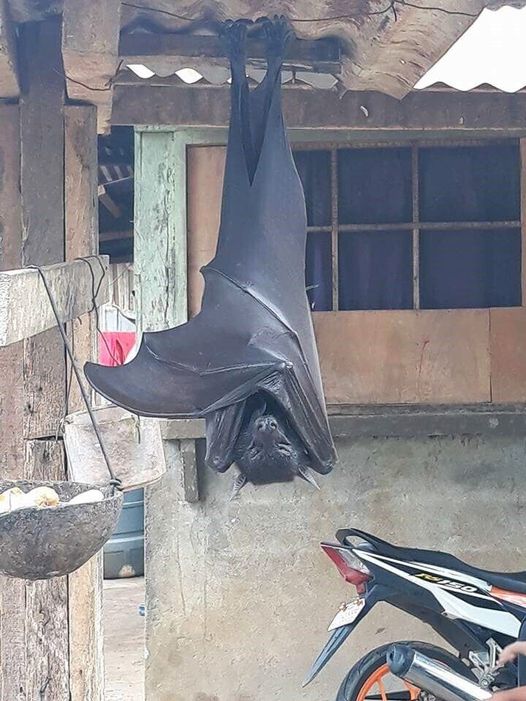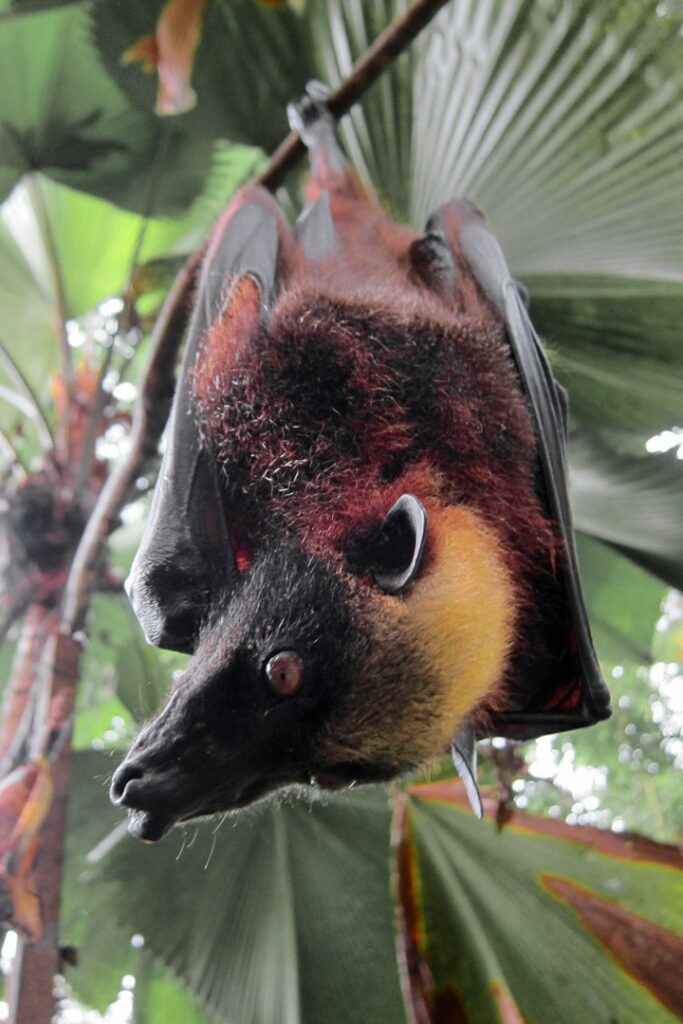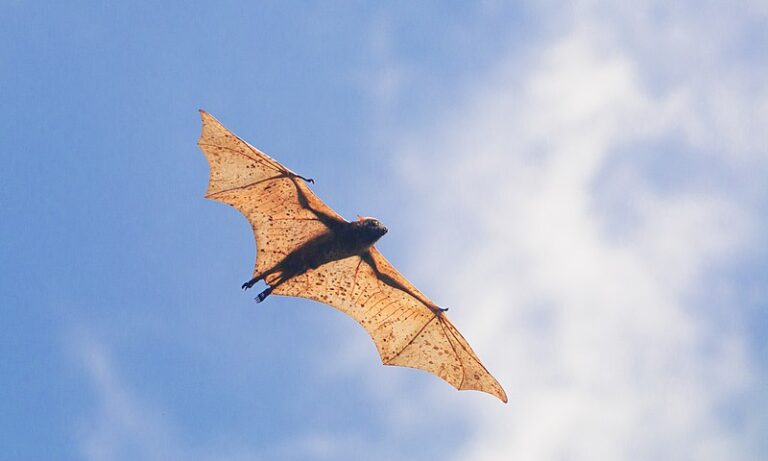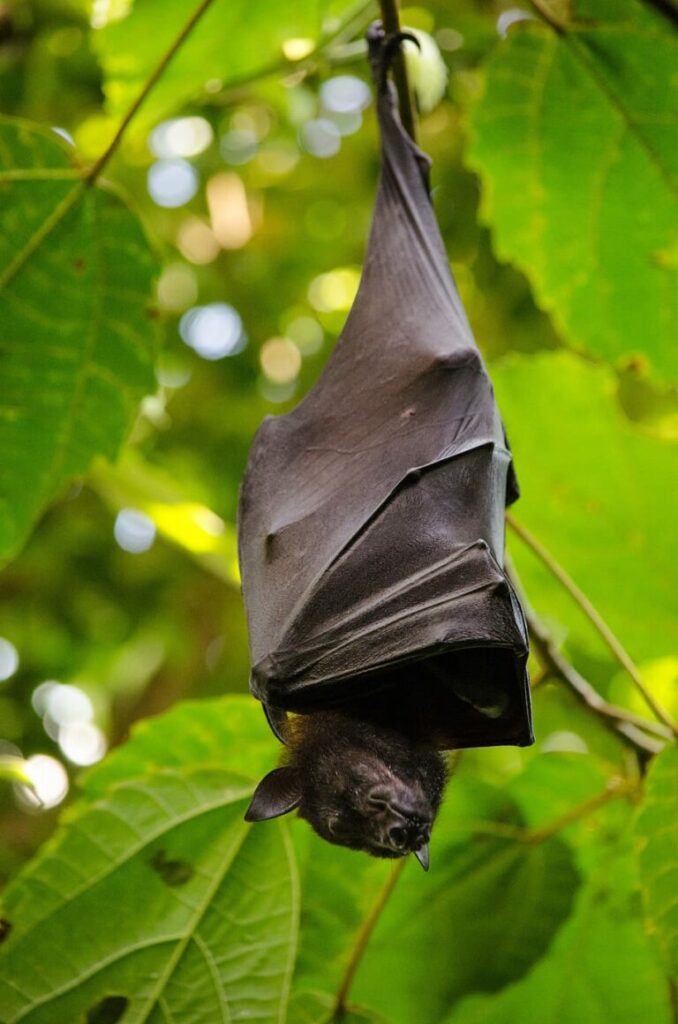The tremendous golden-crowned bat, which has wings nearly as wide as Tom Journey, looks ghastly when it takes off through the discuss spread-eagled, its incline, shaggy body highlighting the estimate of its wings. And when it’s perching, its stretchy dark cape makes it show up like a vampire.
In spite of its threatening estimate, the fruit-eating megabat, a part of a species interesting to the Philippines, is safe and appears no signs of assaulting individuals. Individuals infringe on their territory and chase them illicitly for don or nourishment, making them an imperiled species.
Individuals shocked by their estimate and ruthless see were interested and panicked by viral photos of these powerless, imperiled animals.

They were initially called “human-sized” bats when the first photographs went viral, but this erroneous description led to confusion and panic.
We need to clarify a few things before learning more about these unusual critters. First, they are not “human-sized” unless you apply a very generous definition and compare them to a “small child” rather than an average adult human.
Remember when I told y'all about the Philippines having human-sized bats? Yeah, this was what I was talking about pic.twitter.com/nTVIMzidbC
— hi monica (@AlexJoestar622) June 24, 2020
With a wingspan of generally 5-foot-6 and a body that ranges from seven inches to 11.4 inches and weighs less than 3 pounds, the gigantic golden-crowned bat is one of the biggest species of bats within the world.
The fig-loving bat could be a nighttime herbivore that chases for roots, natural products, and vegetables at night. Its head is secured in a soft brilliant crown.

In spite of the fact that there are other assortments of flying fox megabats in Asia, Africa, and Australia, the golden-crowned flying fox (Acerodon jubatus) is interesting to the Philippine wildernesses, where it regularly lives in colonies with up to 10,000 individuals.
It spends the day hanging from its clawed toes within the trees with a gather of its companions, snoozing off. Some of the time, the gigantic flying fox with a wingspan of less than five feet would rest with its littler cousins, the monster bats.
Mammoth Golden-crowned Flying Foxes do not utilize echolocation as numerous other bats do; instep, they utilize locate and fragrance to discover their way through the discuss.
By spreading fig seeds after it bolsters, the flying fox contributes to reforestation all through the Philippines whereas remaining unwavering in its battle against deforestation.
Shockingly, people do more annihilation the harder the bats work.

According to Bat Conservation International (BCI), more than 90% of the Philippines’ primary forests have been destroyed and bats have disappeared from their former roosting sites on many islands.
Yellow bat numbers have been in steep decline since 1986, when they declined by 50%. This decline is believed to be due to destruction of natural habitat and hunting for recreational, commercial, and personal purposes. Meanwhile, the International Union for Conservation of Nature (IUCN) protects this species as endangered. The Philippine Wildlife Resources Conservation and Protection Act of 2001 protects bats, but the law has not been enforced.
Although most of the animal’s habitat is in protected areas, it is still subject to mass culling. It is an incredibly cruel and horrifying act for a hunter to shoot a sleeping animal as it spends the night roosting.
Many injured animals will grab branches with their toes even after they are killed, preventing them from falling. Although humans pose a serious threat to bat populations, flying foxes are not afraid of humans.
They can be seen hanging out in forests near cities, on telephone poles, or simply in cozy populated areas. However, they can distinguish between safe and dangerous environments and are able to navigate and roost in inaccessible areas, such as slopes more than 1,000 feet above sea level.
Studies have shown that these bats learn incredibly quickly and have high memories similar to dogs.

A study on operant conditioning showed that fruit bats raised by humans were effectively trained to pull a lever in exchange for a juice reward.
More importantly, when the bats returned to the comfort of the laboratory three and a half years later, they immediately pulled the lever because they knew they would be rewarded.
Some people may find the unique physical characteristics of bats unpleasant or frightening. Their large eyes, sharp teeth, and leathery wings can scare or worry you.
Despite their bad reputation as killer animals, only three of the 1,300 species of bats ingest human blood. Golden-crowned fruit bats are really cute, if you can get over the shock of fear!
It is very sad that these innocent and colorful animals are being killed and losing their habitat due to deforestation.
If you agree, please spread awareness about this innocent endangered species.